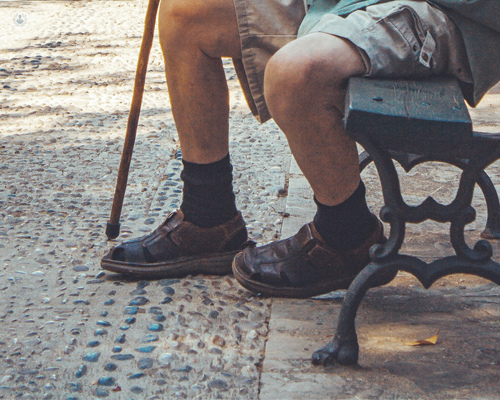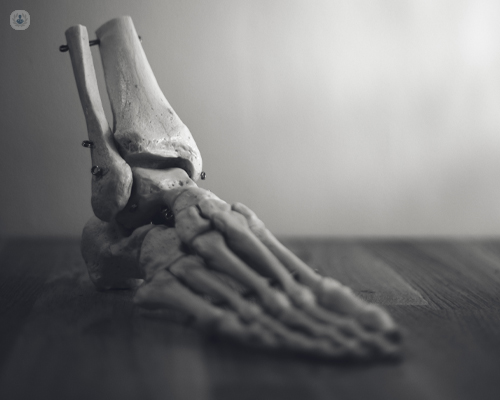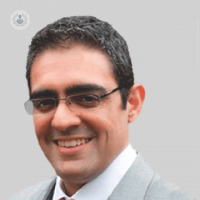Customised CT guided total ankle replacement
Written in association with:Ankle replacements have been around for quite some years, but the new technology available today has made them life altering for patients. Mr Adam Ajis, a highly-experienced and trained consultant orthopaedic surgeon specialising in foot and ankle disorders, explains to us what is involved and what is beneficial of having a customised CT guided total ankle replacement.

Why get an ankle replacement?
When patients suffer with end stage arthritis of their ankle joint, life can be very difficult. They can experience agony simply from taking a few steps or moving their ankle joint up and down. In the past, the only option was to fuse the ankle joint. The up and down movement of the ankle joint function was permanently lost. The only benefit to this was that the patient was no longer in pain. So much of their movement had already been lost, so the joint fusion was tolerated at this point. Basically, a stiff and painful ankle became a stiff and pain-free ankle.
The number of patients, however, that suffered ankle arthritis pain but maintained a good range of movement is growing. For about 15 years ankle replacements have been around, though the earlier models were afflicted by short life-spans and early failures. Fortunately, the poor ones have no longer been available on the marketplace for some time. Since then, technology has advanced and results, such as longevity, are improving.
What is a customised CT guided ankle replacement?
In the south east region, I have performed many successful patient specific CT guided ankle replacements and am one of the most experienced surgeons in using this technique. Today, a CT guided ankle replacement is the latest cutting-edge technology for ankles. As each patient is unique, a one-size-fits-all approach can produce poorer results. This new system allows ankle joints to be put in much more precisely and consistently than ever before.
A CT scan of the patient’s lower leg is taken and then it is sent electronically to a lab in the US. A 3D model of the patient’s ankle is constructed by specially trained bioengineers. Patient specific guides and customised jigs hat that only fit the patient are then made using 3D printing technology. As the surgeon, I then decide how the ankle alignment is required, where it needs to go, and what ancillary procedures are required to make certain a perfect fit. This part of the procedure is done on-line thus saving time in theatre and allowing the patient a shorter anaesthetic and quicker recovery. Risks of surgery are further reduced.

What is recovery like afterwards?
A one-night stay is usually all that is required and, in my hands, some have even been done as day case procedures which is totally possible in the right patient. There is little to no pain after surgery. After two weeks full-weight is allowed on the ankle and physiotherapy begins. Contrast this to the six weeks of non-weight bearing in plaster cast for an ankle fusion and the advantages are clear. Best of all, the pain from arthritis stops straight after surgery.


